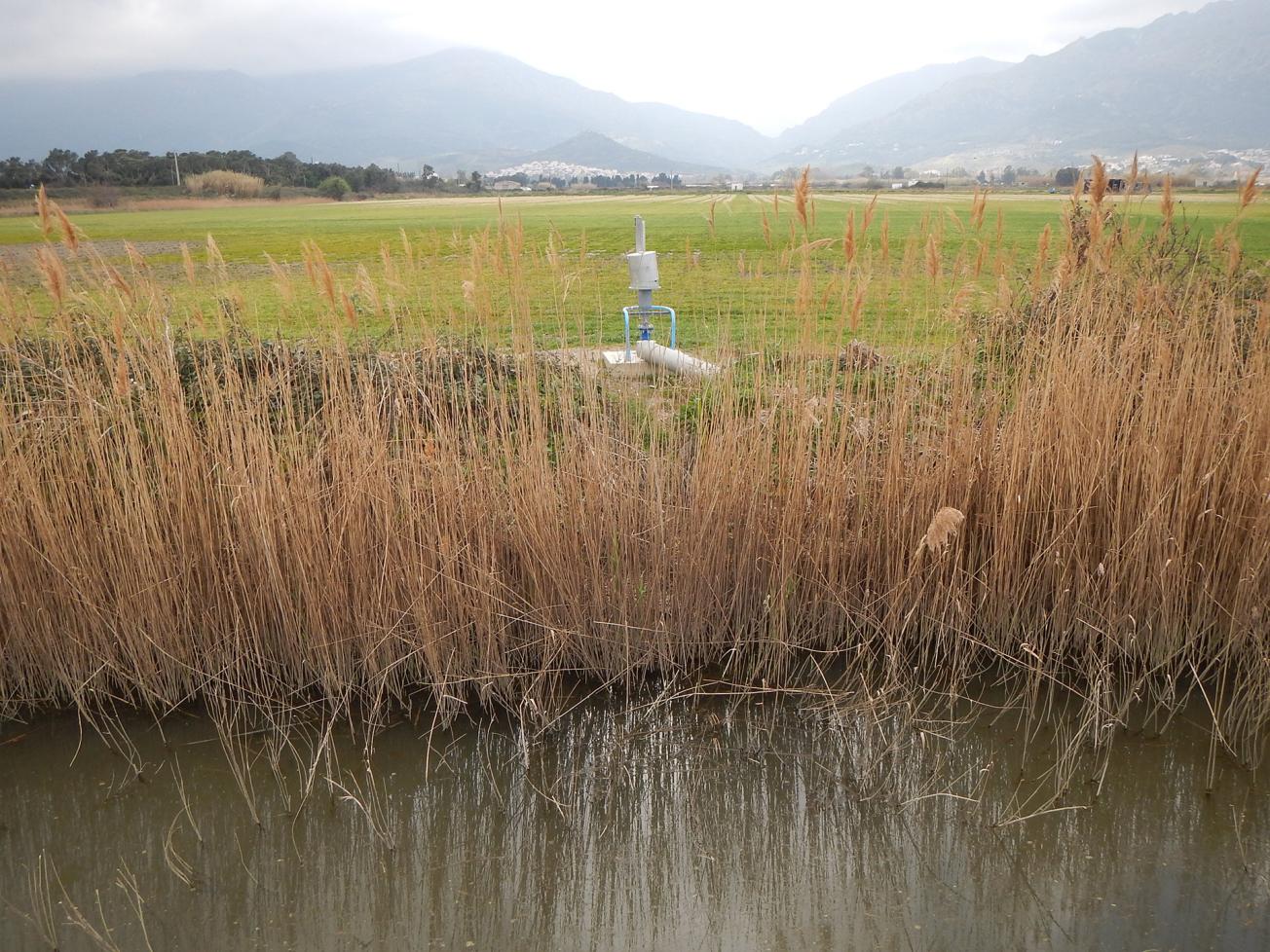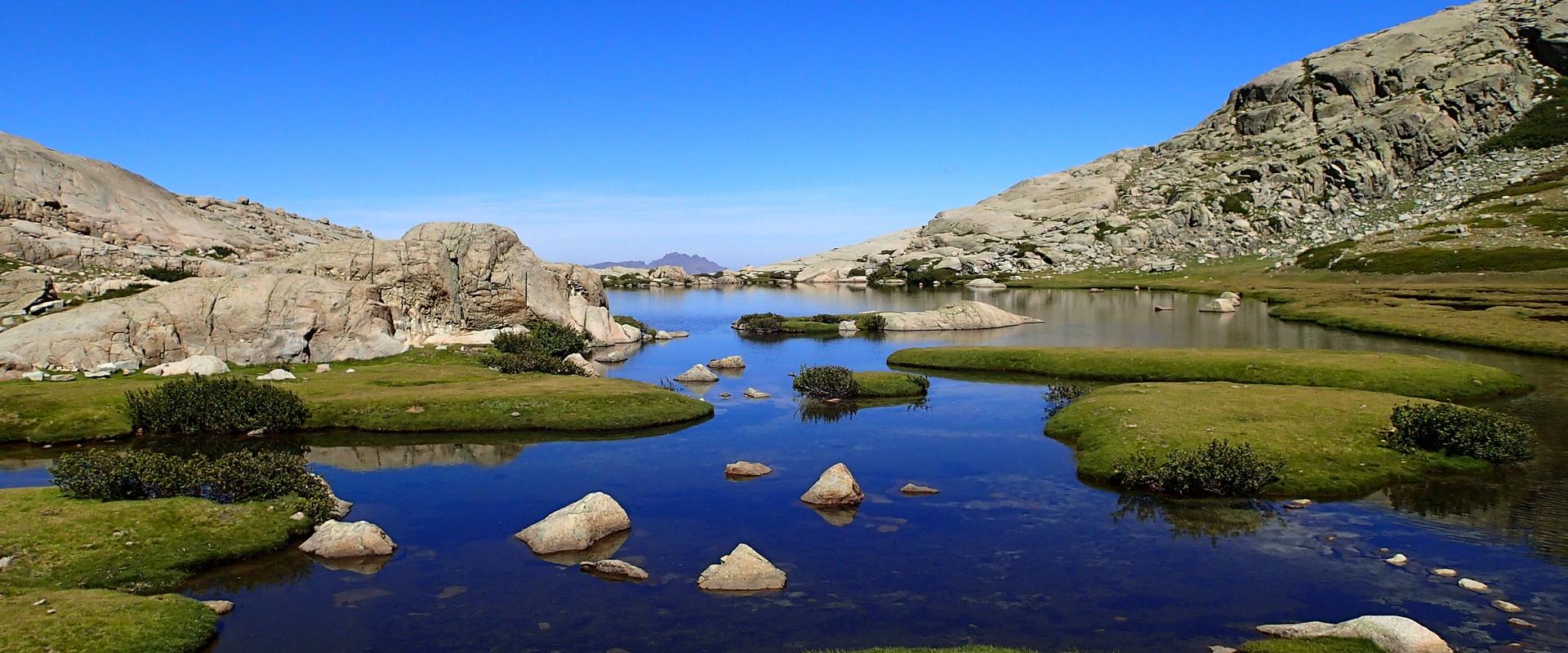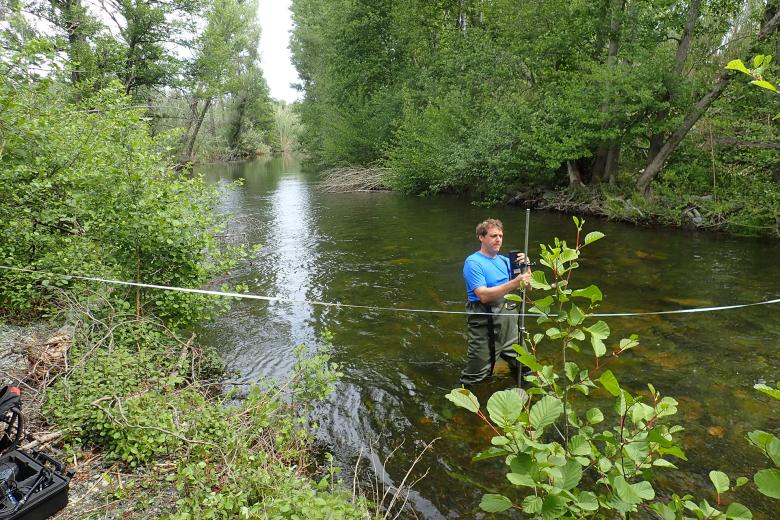
Piezometer on the captive part of the Bevinco alluvial aquifer (Haute-Corse, 2019).
© BRGM - Marie Genevier
The need
Given the expected level of reliability and the physical complexity of the environment, it proved necessary to improve the conceptual model of the structure and functioning of the aquifer, to digitally model the water table and to simulate various abstraction scenarios. Accordingly, Acqua Publica, in partnership with the Rhone-Mediterranean-Corsica Water Agency and the Corsican Environment Office, asked BRGM to carry out a multidisciplinary study based on the various areas of expertise required to conduct it.
The results
Numerous investigations were carried out under this project: eleven electrical geophysical profiles were surveyed, five piezometers were built, instruments were installed on ten structures to monitor the piezometry, temperature and electrical conductivity of the water table, and several river gauging and piezometric surveys were carried out.
The results of the study were used to develop a 3D geological model of the aquifer and to establish a conceptual hydrogeological diagram showing how it functions. Groundwater-river exchanges were characterised and quantified, the dynamics of the different saline intrusion modes were specified (saline input into the river, overflow of the brackish water pond and salt wedge) and the hydrodynamic groundwater functioning was characterised. These numerous elements of knowledge of the environment were then used to develop a grid-based hydrogeological model of the aquifer and to calibrate it in terms of hydrodynamics and chlorides (salinity).
The study monitoring committee, made up of the project partners and members of the technical secretariat of the Corsican Basin Committee and departments of the State, carried out a major consultation process in order to produce five water abstraction scenarios for the river and the water table. By simulating the scenarios with the model, the limits of water abstraction from the hydrosystem could be established with respect to the environmental constraints (river flow and saline intrusions) and the annual volumes that could be abstracted were ascertained. On the basis of these results, indicators could also be developed for managing the piezometric levels of several piezometers.
Using the results
The various stakeholders in the management of the Bevinco hydrosystem water resource now have a management tool and a warning system (piezometers for monitoring purposes and piezometric indicators) to optimise the use of the resource while ensuring compliance with the environmental constraints in the natural environment.

Problems are occurring with salt water rising. This work confirmed that it was probably impossible to go much further than the current pumping levels without causing salt to rise in the borehole (pumping is stopped as soon as the threshold of 80 mg of chloride per litre is exceeded). To ensure the distribution of good quality water in Bastia, we now wish to establish different scenarios according to the distribution needs that may arise.
The partners
- Acqua Publica
- Rhone Mediterranean Corsica Water Agency, Corsica Environment Office
Public reports
-
Hydrogeological modelling of the Bevinco alluvial water table (Haute-Corse). Results of the five piezometer survey. Final report
-
Hydrogeological modelling of the Bevinco alluvial aquifer (Haute-Corse). Phase 1 report: 3D geological modelling and conceptual hydrogeological diagram
-
Hydrodynamic and hydrodispersive modelling of the Bevinco alluvial aquifer. Final report








